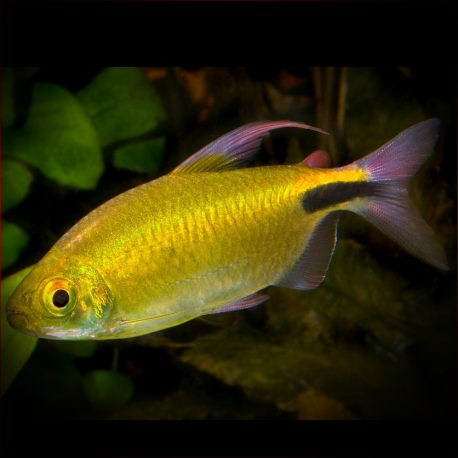More info
Datasheet
| Minimum Tank Size | 143 litres / 37.78 US gallons |
| Maximum Size | 12.5cm / 4.92inches |
| Temperature | 22°C / 71.60°F - 26°C / 78.80°F |
| Hardness | 5-19ºdH |
| pH | 6.0-7.5 |
General Description
The Brycinus Longipinnis, commonly known as the Long-Finned Tetra, is a species within the Characiformes order and the Alestidae family. It can reach a maximum size of 12.5cm and requires a minimum tank size of 143 litres. This tetra is native to northern West Africa, inhabiting large rivers and sometimes venturing into smaller streams and tributaries, as well as lightly brackish estuarine waters. With a rarity in the aquarium trade due to poor shipping survival rates, a well-acclimatized group of adults can create a stunning sight in a suitable tank setup.
Aquarium Setup
For optimal tank conditions, provide ample open swimming space as the Long-Finned Tetra is highly active. It thrives in a dark substrate with pockets of dense vegetation and floating cover, which not only enhances its appearance but also reduces skittish behavior. While replicating its natural habitat water stained with tannins is beneficial by adding aquarium-safe peat to the filter or substrate, maintaining pristine water quality is crucial for the species' long-term well-being.
Behaviour
The Long-Finned Tetra is a vibrant addition to larger community tanks, but its size and constant activity might intimidate smaller or slow-moving tankmates. It flourishes in dedicated West African setups with fish like congo tetras or African red-eyed tetras. It can also coexist with cichlids such as Hemichromis or Pelvicachromis species and Synodontis catfish. In larger tanks housing South American cichlids like Geophagus, Satanoperca, and Uaru, the Long-Finned Tetra serves as an ideal shoaling fish, ideally kept in groups of at least six for enhanced well-being.
Feeding and Diet
Initially finicky when imported, the Long-Finned Tetra typically adapts well to various foods. To maintain optimal condition, offer a mix of live, frozen, and dried foods, focusing on high-protein options like chopped earthworms or prawns regularly. Ensuring a balanced diet rich in protein is essential for the overall health and vitality of this species.
Reproduction & Dimorphism
Sources suggest that breeding the Long-Finned Tetra in captivity is challenging yet achievable. It is an egg scatterer species, requiring a well-prepared spawning tank with soft, acidic water, dim lighting, and ample hiding spots using fine-leaved plants. Conditioning the fish with live and frozen foods before introducing them to the spawning tank is crucial. Adult males exhibit sexual dimorphism by developing long, flowing dorsal fins, being slightly larger than females, and showcasing a characteristic convex profile on the anal fin.
Habitat and Distribution
Found throughout northern West Africa from the Gambia to the Democratic Republic of Congo and Gabon, the Long-Finned Tetra thrives in large rivers and occasionally migrates to smaller streams and tributaries. It is adaptable to lightly brackish estuarine waters, showcasing the species' versatility in different aquatic environments.

